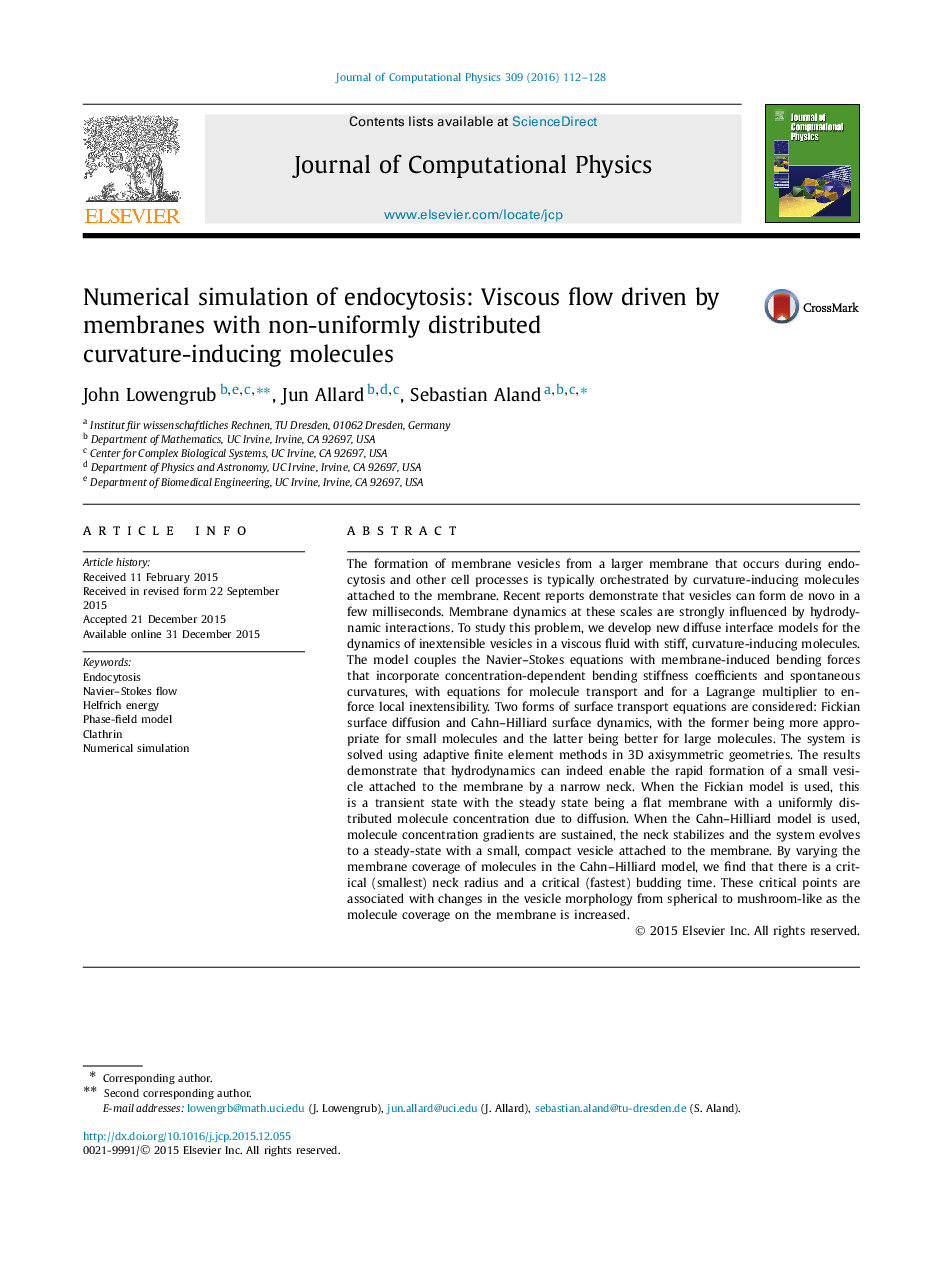| Article ID | Journal | Published Year | Pages | File Type |
|---|---|---|---|---|
| 6930511 | Journal of Computational Physics | 2016 | 17 Pages |
Abstract
The formation of membrane vesicles from a larger membrane that occurs during endocytosis and other cell processes is typically orchestrated by curvature-inducing molecules attached to the membrane. Recent reports demonstrate that vesicles can form de novo in a few milliseconds. Membrane dynamics at these scales are strongly influenced by hydrodynamic interactions. To study this problem, we develop new diffuse interface models for the dynamics of inextensible vesicles in a viscous fluid with stiff, curvature-inducing molecules. The model couples the Navier-Stokes equations with membrane-induced bending forces that incorporate concentration-dependent bending stiffness coefficients and spontaneous curvatures, with equations for molecule transport and for a Lagrange multiplier to enforce local inextensibility. Two forms of surface transport equations are considered: Fickian surface diffusion and Cahn-Hilliard surface dynamics, with the former being more appropriate for small molecules and the latter being better for large molecules. The system is solved using adaptive finite element methods in 3D axisymmetric geometries. The results demonstrate that hydrodynamics can indeed enable the rapid formation of a small vesicle attached to the membrane by a narrow neck. When the Fickian model is used, this is a transient state with the steady state being a flat membrane with a uniformly distributed molecule concentration due to diffusion. When the Cahn-Hilliard model is used, molecule concentration gradients are sustained, the neck stabilizes and the system evolves to a steady-state with a small, compact vesicle attached to the membrane. By varying the membrane coverage of molecules in the Cahn-Hilliard model, we find that there is a critical (smallest) neck radius and a critical (fastest) budding time. These critical points are associated with changes in the vesicle morphology from spherical to mushroom-like as the molecule coverage on the membrane is increased.
Related Topics
Physical Sciences and Engineering
Computer Science
Computer Science Applications
Authors
John Lowengrub, Jun Allard, Sebastian Aland,
